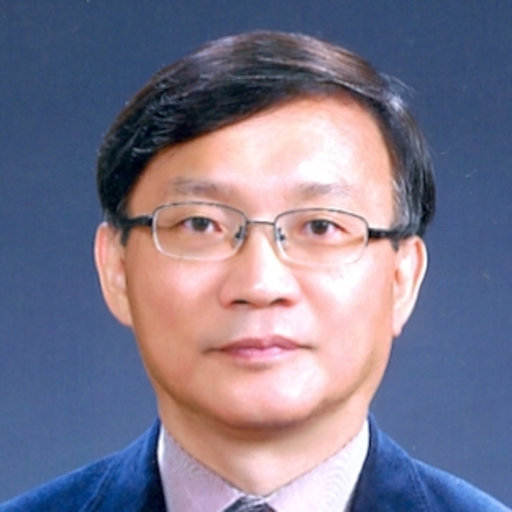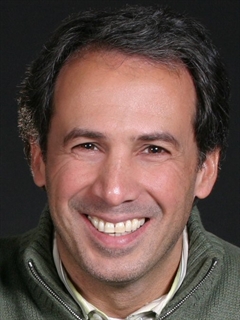Program
AT&T Conference Center | University of Texas at Austin, USA 14th July – 19th July 2024
keynote Speaker
Advances in High-Power Microwave Technologies

GlobalEM 2024 Tutorials
Please Note: Attendance at these tutorial sessions is included in theGlobalEM 2024 Symposium full conference registration fee.
Status and Development of New Sources for Producing HPEM Fields
Edl Schamiloglu, Distinguished Professor of Electrical and Computer Engineering, University of New Mexico, Albuquerque, New Mexico, Email: edls@unm.edu
Abstract: The High Power Microwave (HPM) community is in its second half-century of research and development. The field of HPM was founded in the late 1960s once modern pulsed power came on the scene. The original players were the USA and the USSR but following the downfall of the Soviet Union on December 31, 1991, HPM spread to many other nations throughout the world. Today, China is the biggest player with the most resources and manpower invested in the topic. This tutorial will review the evolution of the field of HPM and how it joined forces with the Nuclear EMP community and the ultrawideband community to establish the high power electromagnetics (HPEM) community.

Biography: Edl Schamiloglu received his B.S. and M.S. degrees from Columbia University in 1979 and 1981, respectively. He received his Ph.D. from Cornell University in 1988. He joined the University of New Mexico as Assistant Professor in 1988 where he is currently Distinguished Professor. He is a Fellow of the IEEE and a Fellow of the American Physical Society.
Resilience and Protection of Critical Infrastructure from HPEM Environments
Richard Hoad, QinetiQ Ltd, Farnborough, Hampshire, United Kingdom, Email: rhoad@qinetiq.com
Abstract: This tutorial will introduce or reappraise the audience with the need for and the potential solutions for HPEM resilience and protection of critical infrastructure assets. We will provide an overview of relevant transient HPEM ‘threat’ environments including High-Altitude Electromagnetic Pulse (HEMP) and Intentional Electromagnetic Interference (IEMI) environments. We will describe what critical infrastructure is and how it has particular challenges, which could make it vulnerable to HPEM environments. Finally, we will discuss some practical protection solutions and introduce the concept of moving towards a resilience based, rather than protection-dominated, approach to HPEM threat mitigation. We will reference published information such as the standards of International Electrotechnical Commission (IEC) 77C and, in particular, the newly published IEC standard 61000-5-6. We will also reference other relevant authoritative documents and provide a bibliography for further reading.
Keywords – High Power Electromagnetics (HPEM); High-Altitude Electromagnetic Pulse (HEMP); Intentional Electromagnetic Interference (IEMI); Protection; Resilience.

Biography: Dr. Richard Hoad, MSc. C. Eng, FIET, SMIEEE; Chief Engineer & Capability Leader; QinetiQ Ltd. UK. Richard is a Chief Engineer and Capability Area Leader for Directed Energy and Weapons Systems at QinetiQ Ltd. In his role as capability area leader, Richard provides strategic oversight and leadership of QinetiQ’s capability; defined as people/skills, facilities, partnerships and intellectual property (IP), in High Power Radio Frequency (HPRF); High Energy Laser (HEL); and other directed energy technologies. He has undertaken many years of research studying emerging disruptive threats to military and Critical Infrastructure assets, particularly for high impact low likelihood events. He has helped operators of mission critical and essential services understand their risk to novel electromagnetic threats and has developed tools, techniques and products, which support improved resilience of military systems and the Critical Infrastructure. Richard is the author of over 90 peer reviewed technical and journal papers on the topics above and is co-author of a book titled ‘HPEM Effects on Electronic Systems’. He is a Fellow of the Institute of Engineering and Technology (IET), registered with the Engineering Council UK (ECUK) as a Chartered Engineer (C.Eng.) a HPEM Fellow of the SUMMA Foundation; a QinetiQ Senior Fellow; and a Member of the Register of Security Engineers and Specialists.
Principles and Application of Protection Devices for HPEM Purposes
Armin W. Kaelin, EMProtec AG, Switzerland, Email: armin.kaelin@emprotec.ch
Abstract: Comprehensive HPEM protection consists of both shielding as well as protection of shield penetrations. In this tutorial, the focus is on the proper treatment of shield penetrations. A short review of realistic conducted HPEM environments helps in defining transient protection requirements for various HPEM-threats. Typical Point of Entry (PoE) protection devices consist of multi-stage combinations of linear filters and non-linear (i.e. voltage dependent) protection components. Understanding the working principle of various protection components is important in order to properly coordinate multiple protection stages for different pulse waveforms. Specific requirements for power lines, data lines, and coaxial cables will be discussed. Correct installation of all protection devices is essential for proper protection function. Finally, the principles of threat-level testing of protection devices by Pulsed Current Injection (PCI) will be briefly explained.

Armin W. Kaelin has a Master in Electrical Engineering from ETH, the Swiss Federal Institute of Technology in Zurich and in 1991, he also received a Ph.D. from ETH. Dr. Kaelin has a long career in the field of HPEM in various positions. From 1992 to 2001 he was head of the NEMP-Laboratory of the Swiss Defence Procurement Agency (today HPEM-Laboratory of armasuisse), where he was responsible for the Swiss EMP-protection and testing program. In 2000, he was elected to the grade of EMP Fellow of the SUMMA Foundation “For his leadership in the Swiss NEMP program, including pulse and CW testing of equipment and protected facilities.” In 2001, Armin Kaelin joined a privately owned company, where he developed numerous protection products for both transportable and fixed systems. In 2013, Armin Kaelin started his own company, EMProtec AG, which offers consulting services as well as a variety of HPEM-protection products. He is also active in IEC standardization in SC77C (HPEM) and TC81 (lightning protection).
Lightning: Basics, Incidence, and Location Techniques
Farhad Rachidi, EPFL, Switzerland and Marcos Rubinstein, Univ. of Applied Sciences and Arts, Switzerland
Abstract: Lightning represents one of the most important sources of electromagnetic disturbances. After presenting an overview of basic lightning characteristics, we will discuss the problem of lightning incidence, with special attention to wind turbines. Finally, we will present an overview of lightning location systems.
Content:
1. Introduction to Lightning
2. Lightning Incidence
3. Lightning Location Systems

Farhad Rachidi is a Titular Professor and the Head of the Electromagnetic Compatibility Laboratory at the Swiss Federal Institute of Technology (EPFL), Lausanne, Switzerland. He is an IEEE Fellow and EMP Fellow. His research interests are lightning, electromagnetic compatibility, field-to-transmission line interaction and time reversal. He has authored or co-authored over 250 scientific papers published in peer-reviewed journals and over 400 papers presented at international conferences.

Marcos Rubinstein is a professor at the University of Applied Sciences and Arts Western Switzerland. He is an IEEE Fellow and member of the Institute for Information and Communication Technologies. He serves as head of the Applied Electromagnetics Group and president of the URSI Swiss national committee. He has authored or coauthored over 400 scientific publications in journals and international conferences and he has received several prestigious awards.
EM Background for EM Coupling Assessment on Complex Systems
Jean-Philippe Parmantier, ONERA/DEMR, University de Toulouse, F-31055, Toulouse, France
Abstract: EM coupling concerns the evaluation of transfer functions between a source and a targeted test point. The transfer function concept requires the assumption of linearity, which can be a limitation for HPE sources radiating on complex systems. Nevertheless, transfer functions are essential to analyze the EM constraints resulting at the level of the equipment pieces because they include all the complexity of EM scattering and propagation effects brought by the system body together with its volume and equipment internal architectures. Thereby, transfer functions help defining efficient protection margins (in which contribution of non-linearities may be included if relevant) as well as test qualification levels to be applied at equipment pieces. The objective of this tutorial is to provide the EM background needed for understanding the relevant contributors of such transfer functions when HPE radiates on complex systems. EM topology will be used to provide various ways to think of the EM coupling problem in terms of combinations of interactions between the elementary EM contributors with respect to the frequency of interest. Those contributors will be presented in terms of EM physics of materials (good and poor electrical grounds…), scatterers (apertures, seems, volumes) and guiding structures (electrical cables, pipes, wires …). Special attention will be given to electrical wiring because of its end connections at the level of equipment pieces. The presentation materials will be illustrated by EM numerical simulation and measurement results obtained by the speaker research group at ONERA during the last 30 years.

Jean-Philippe Parmantier received the engineering degree from SUPELEC, Gif-sur-Yvette, France, in 1987, and the Ph.D. degree in electronics from the Lille University, Lille, France, for his research on electromagnetic topology and established the first basis of the CRIPTE code. In 1988, he joined Dassault Aviation, Paris, France. In 1991, he joined the Office National d’Etudes et de Recherches Aérospatiales (ONERA) - the French Aerospace Lab, where he began to apply his research on various complex systems such as the EMPTAC test bed aircraft from 1993 to 1996. From 1999 to 2015, he has been the Head of the EMC Research Group of ONERA’s Electromagnetism and Radar Department (DEMR). He is currently the Scientific Deputy Advisor of this department. He has authored or coauthored a large number of papers on EMC. He has been animator of various EMC-related conferences and research projects an HPE fellow since 2000, and is the recipient of the Carl Baum Medal in 2019. Dr. Parmantier is the recipient of the 1999 French SEE Général Ferrié Price and the 2021 URSI-France Medal.
Tutorial on Some Aspects of Intentional Electromagnetic Interference (IEMI)
D. V. Giri, Pro-Tech, USA
Abstract: In this half-day tutorial, we will present some aspects of IEMI. IEMI can be or typically is a High-Power Electromagnetic (HPEM) signal. HPEM can be natural (as in lightning), accidental or unintentional (as in EMI) or intentional (as in IEMI). This is an important topic given the reliance of modern societies on developments in electrical and electronic technologies in many components of infrastructure such as electrical power distribution, communication, aviation, healthcare, and banking, etc. Unlike NEMP, IEMI cannot be standardized since it is a function of the state of-the-art in pulse power, antennas, and how well one can camouflage them in order not to leave any forensic evidence behind. There are many ways to classify IEMI signals. Bandwidth based classification will be discussed. IEMI can be a single frequency CW, pulsed CW, single pulse, or a train of pulses. It can be radiated towards or conducted into a victim system. Advances in modern pulse power technologies and development of hyperband antennas play a significant role in intentionally producing interfering signals. We will discuss some examples of intense EM source/antenna combinations. Since the response at a selected port of a system or a subsystem can be thought of as a summation of damped sinusoids, one can say that the most effective IEMI source is a damped sinusoid, if the source frequency is matched to the vulnerable frequency of the victim system. It behooves us to investigate damped sinusoids in depth and we will look into the generation of intense damped sinusoids at selected frequencies. Documented effects on electronics will also be presented.

- Dr. D. V. Giri
- Life Fellow of IEEE,
- URSI Fellow and SUMMA Foundation Fellow
- Inducted into IEEE EMC Society - Hall of Fame (2022)
- IEEE EMC Society Distinguished Lecturer (2020-2021)
- First Recipient of Carl Baum Medal (2017)
- International Chair, Commission E, URSI (2014-2017)
- IEEE John Kraus Antenna Awardee (2006)
- E-mail: Giri@DVGiri.com | URL: www.dvgiri.com
Dr. Giri has nearly 50 years work experience in the general field of electromagnetic theory and its applications in NEMP (Nuclear Electromagnetic Pulse), HPM (High-Power Microwaves), Lightning, and UWB (Ultra-Wideband). A complete description of his academic training and work experience may be seen at his website: www.dvgiri.com. He obtained the B.Sc., Mysore University, India, (1964), B.E., M.E., Indian Institute of Science, (1967) (1969), M.S., Ph.D., Harvard University, (1973) (1975), Certificate, Harvard Introduction to Business Program, (1981). Since 1984, he is a self-employed consultant doing business as Pro-Tech, performing R&D work for U.S. Government and Industry. He is also an Adjunct Professor in the Dept. of ECE, University of New Mexico, Albuquerque, NM. Dr. Giri has taught graduate and undergraduate courses in the Dept. of EECS, University of California, Berkeley campus. He is the recipient of the IEEE Antennas and Propagation Society’s 2006 John Kraus Antenna Award. Dr. Giri is a Life Fellow of IEEE, Inducted into IEEE EMC Society Hall of Fame 2022, Member of Commission B, URSI, International Chairman of Commission E, URSI. He was an Associate Editor for the IEEE Transactions on EMC and is a SUMMA Foundation Fellow. He has published three books.
1) High-Power Microwave Systems and Effects, published by Taylor and Francis in 1994.
2) High-Power Electromagnetic Radiators: Nonlethal Weapons and Other Applications, published by Harvard University Press in 2004.
3) High-Power Electromagnetic Effects on Electronics, published by Artech in 2020.
He has also published over 150 papers and reports.